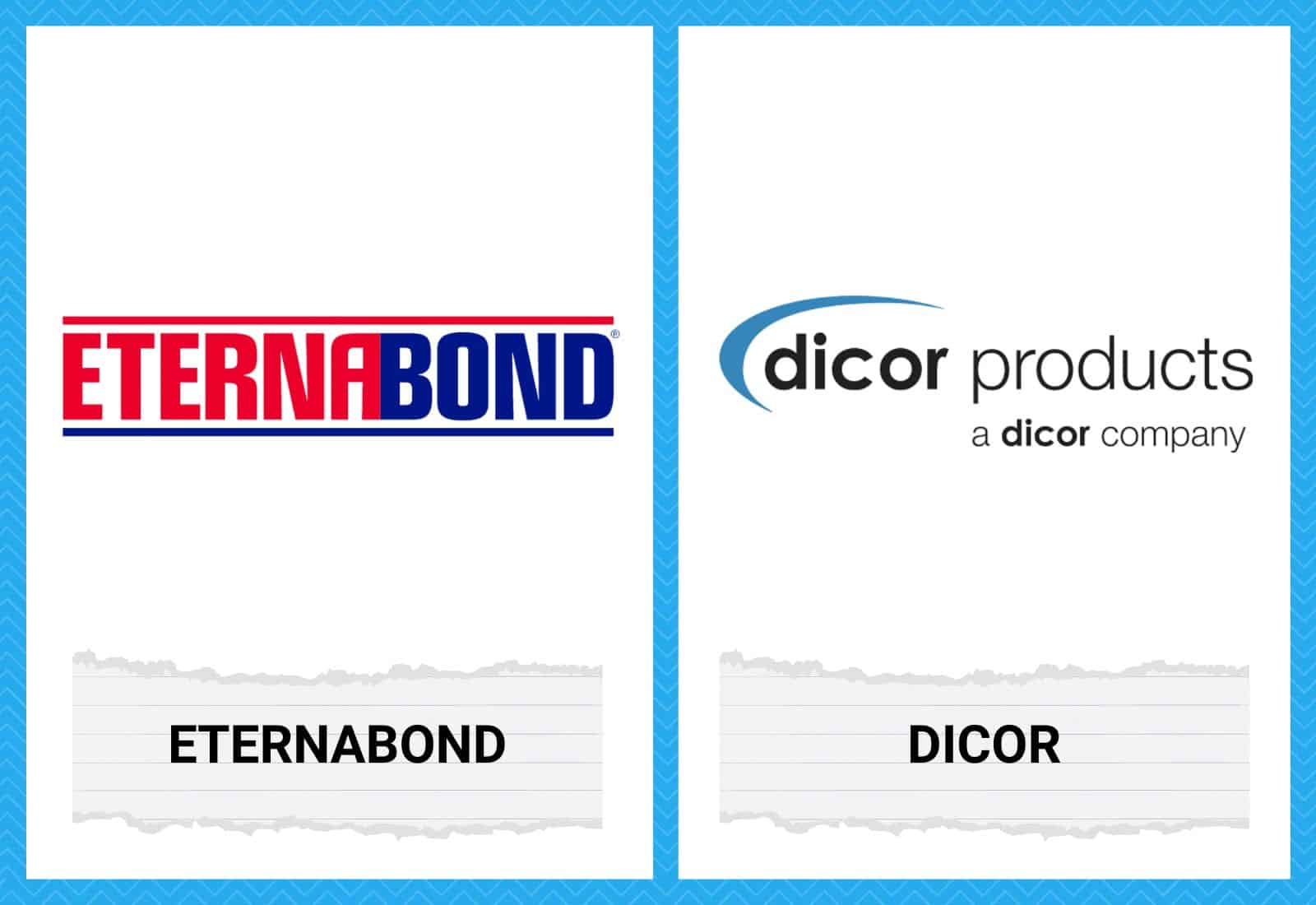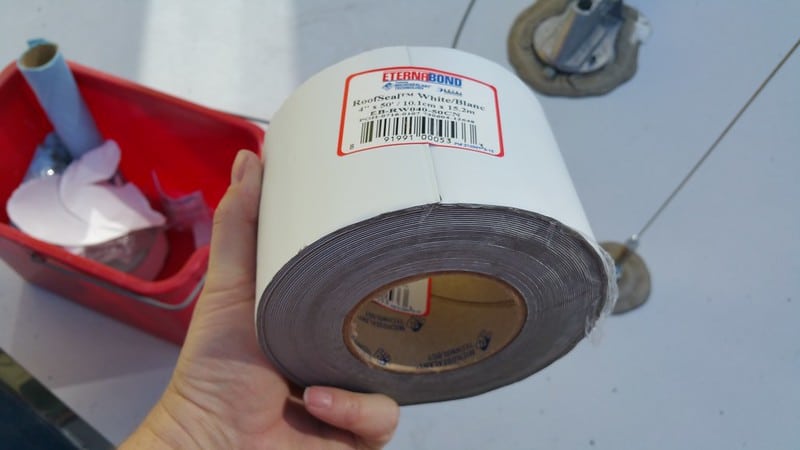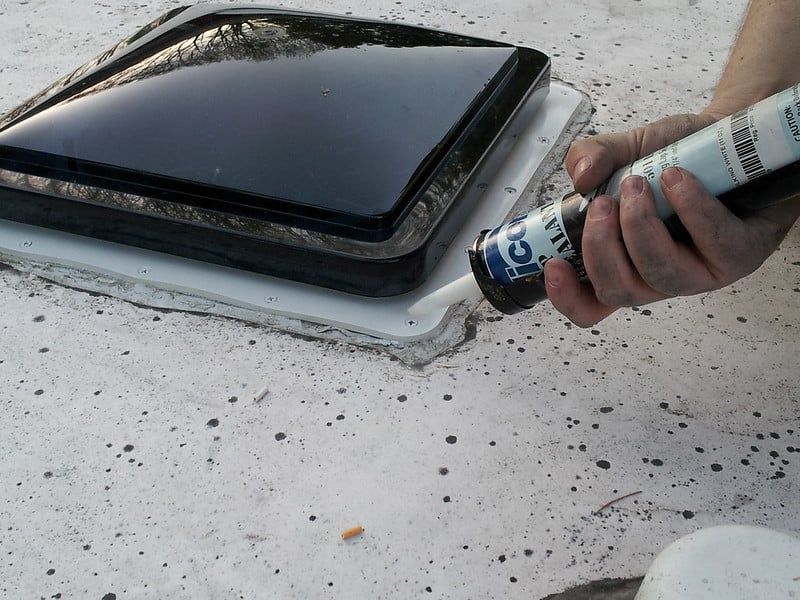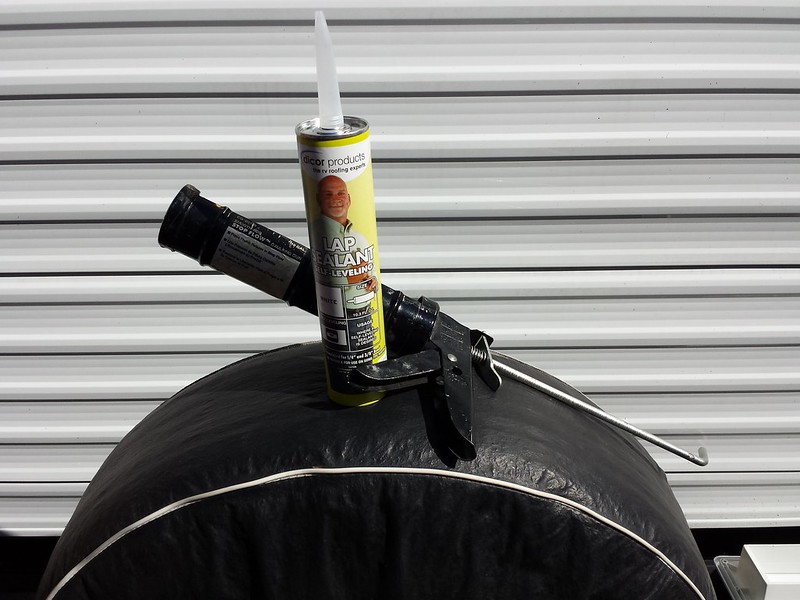
The RVs are perfect for traveling long distances but the majority of them have leaking roof issues. The leaking roof can damage the wall paneling as well as the electrical connections in the RV.
For this reason, the immediate solution is to use the sealant as it helps cover the leaking area and protects the RV from getting wet from the inside.
EternaBond and Dicor are two commonly used sealants and we have the in-depth comparison to help you choose between the two!
EternaBond vs Dicor
| EternaBond | Dicor | |
|---|---|---|
| UV stability | No | Yes |
| Adhesive nature | Sticky tape | A creamy liquid that dries up |
| Compatible materials | Concrete, tile, kynar-coated metals, copper, wood | Concrete, vinyl, aluminum, wood, metal |
| Colors | White, gray, tan, black | White |
EternaBond RV Roof Sealant Tape
This sealant tape has been around for years and is the micro tape that’s designed to stop the leaks and can be used to waterproof the roofs as well. It is a UV-resistant tape, which means it won’t warp, even if it is exposed to direct sunlight.
There are different widths and lengths available, so you can purchase according to the RV’s size or the size of the leak. The commonly-used widths include two inches, four inches, and six inches, but the width ranges from two inches to forty-eight inches.
The four-inch variant is fine for RV’s roof as it provides sufficient coverage to the seams. It has a built-in primer, which makes sure that the tape bonds well with the surface and create a water-tight surface.
The tape has a warranty of ten years, but if you use it correctly, it won’t go anywhere for over eighteen years. It has been designed with MicroSealant technology, with which the UV-stable backing has been added.
1. Installation
Since this is a tape, it’s extremely easy to install – it won’t take more than a few minutes. However, make sure you clean the surface area properly as it’s important for the tape to adhere to the surface.
In fact, you can purchase EternaClean, which is suitable for cleaning roofs before you apply the tape. You can also use alcohol or turpentine for surface cleaning.
The tape is designed with multiple layers, which makes it thick and difficult to cut. For this reason, it’s recommended that you use a sharp scissor.
Secondly, you have to remember that the tape is extremely sticky, so you have only one chance to apply it. For this reason, it’s better that you cut the tape to the desired length and take off the release liner while applying the tape.
Some people also recommend using a utility knife to remove the liner as it’s stuck to the tape tightly and tearing it off requires strength. In addition, if you are using the tape on top of the old sealant, you don’t have to remove the previous one.
It can also be applied in the form of small strips but make sure you overlap the strips’ edges to add an extra protection layer. Once applied, it doesn’t need any maintenance, making it a hassle-free option.
The tape cannot stick to silicone, which is why you should remove the silicone sealant before applying the tape. On the other hand, if you want to take off the tape for any reason, you can use a hair dryer on warm setting or a heat gun to loosen up the tape and peel it off.
2. Uses
The sealant tape is usually used for covering the leaks in EPDM, hypalon, PVC, and TPO roofs and resealing the roof seals to prevent leaks. In addition, it can be used to seal the AC shrouds, vent covers, and drain pipes because it is sticky and can hold up well.
As far as the surface material is concerned, it can be used on concrete, tile, Kynar-coated metals, copper, and wood. Also, you can use it to secure the wires on the roof.
The tape is also available in different colors, including white, black, gray, and tan, so you can match the surface’s color.
3. Design
The tape is made from synthetic polymers and there is a built-in primer that allows a strong sealing and bond. The tape has extreme temperature tolerance as it’s made from a combination of rubbers and resins.
Also, it’s available in different widths, lengths, and colors, so you can match it to the surface and size of the leak.
Dicor Lap Sealant
Contrary to EternaBond, this is a self-leveling sealant and is available in the form of a thick paste. This paste is applied to the horizontal cracks and is allowed to dry to create a seal.
It is an apt solution for people who want to create a watertight seal along the screw heads, air vents, edges of the roof, and vent pipes. There are different variants of lap sealant available, including a non-sag version that’s suitable for people who need to cover vertical leaks.
The lap sealant is recommended for sealing rubber roofs since it has a thick consistency. When applied, it flattens out on its own. It is extremely easy to use as the bottle comes with a nozzle, which helps ensure precise application.
Moreover, the nozzle is thick enough to ensure a smooth flow of sealant. It is a UV-stabilized sealant, which means it doesn’t discolor or stain the surface it’s applied to.
1. Installation
The sealant is designed with a self-leveling feature, which makes it convenient to apply. Once it dries out, it will seal the leaks for two to three years. However, the surface needs to be cleaned before application.
In addition, it’s recommended that you don’t use Dicor sealant on the EPDM roofing as it can cause rippling and bubbling. There is also a non-sag variant, which has been specifically designed for vertical areas or other areas where self-leveling doesn’t work.
The surface can be cleaned with alcohol or turpentine, and once cleaned, you need to apply the sealant on the leaking areas and let it dry.
The self-leveling feature means that it will spread around on its own but make sure you start with less product because if applied thickly, it will take a long time to dry up.
In addition, be careful about the application because it will be challenging to remove the sealant once it dries up.
2. Uses
The lap sealant is one of the most versatile sealants available in the market and has been particularly designed for hypanol roofing. However, it can be used with other roofing materials, such as PVC and TPO.
In addition, it promises exceptional adhesion to mortar, concrete, galvanized metal, aluminum, vinyl, and wood. The sealant can be used to seal the connections around the vent, antenna, and ladder as well.
3. Design
The lap sealant has a consistency of runny putty, which is why it tends to flow and spread around easily. It is self-leveling, which means you don’t need to get your hands dirty while applying it.
However, you can use a putty knife if it’s not spreading fast enough. The lap sealant also prevents degradation and discoloration. In particular, it has a stabilizer, which makes it a UV-stable option and offers protection from UV rays.
The sealant is available in the form of a bottle and the bottle has a nozzle, which helps ensure precise application.
In addition, each bottle has 1.5kg of sealant, which means one bottle is sufficient to cover up multiple leaks on the roof since you need to apply a thin layer. The sealant has a HAPS-free formula, which ensures a safe application experience for the users.
The Bottom Line
The bottom line is that the RV roof and vent leaks should be fixed on time to prevent damage to the wiring and electrical components.
EternaBond is a recommended choice for people who need an immediate solution because it can be applied like regular tapes while Dicor sealant needs time to dry up and create a sealing layer.




